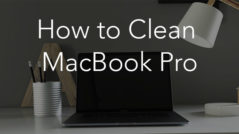


If it says “Failing,” this could be the source of your problems. If it says “Verified,” your drive is performing normally, with no issues. Status” and see what is written alongside it. Select your main drive (likely labeled “Macintosh HD”).Click System Report, and then choose Storage.Click the Apple logo in the top-right corner, and then choose About This Mac.Follow the steps below to check the health of your SSD: And when they do eventually die, data recovery is impossible. Solid-state drives generally only fail after some advance warning. These aren’t prone to failing abruptly the way standard hard disk drives are. StorageĪ failing drive can also cause issues. When you use a USB stick as the storage medium, you can test the RAM properly without the macOS overhead. Install it on a USB stick, start your Mac, and then run it. For example, MemTest86 is a free tool you can use to check your computer’s memory. You can check some components manually with the right tools.


 0 kommentar(er)
0 kommentar(er)
